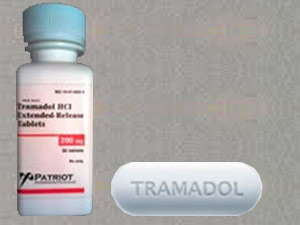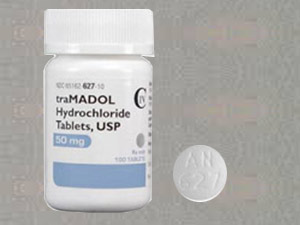Buy Tramadol Online
Showing all 4 results
What is Tramadol?
Tramadol is a prescription medicine that helps relieve moderate to moderately severe pain. It is available as an immediate-release and extended-release tablet. It also comes as an extended-release oral capsule. Tramadol oral tablets are also available as generic drugs. The immediate-release tablet is known as the brand-name drug Ultram. You can Buy Tramadol online with a prescription.
Important Information
Seizures have been reported in patients using Tramadol. If you take more Tramadol than recommended, you are more likely to have attacks. Episodes are also more likely in people who have a seizure disorder or are taking certain antidepressants or opioid medications. You should not use Tramadol if you are prone to addiction. If you have problems in your stomach or intestines, severe breathing problems, or if you have recently used alcohol, sedatives, tranquilizers, narcotic medication, or an MAO inhibitor, you should not take Tramadol. Tramadol may be habit-forming and can slow or stop your breathing. If a child or other person uses this medicine without a prescription, it may lead to addiction, overdose, or death. Never give Tramadol to a child under the age of 12 or anyone under 18 who has recently had surgery to remove the tonsils or adenoids. Do not give Ultram ER to anyone below 18 years. The use of Tramadol during pregnancy can result in life-threatening withdrawal symptoms in the newborn. Using Tramadol with alcohol or other drugs that cause drowsiness or slow your breathing can lead to fatal side effects.
What to know before taking Tramadol?
Avoid taking Tramadol if you are allergic to it, or if you have:
- stomach or bowel obstruction (including paralytic ileus)
- severe asthma or shallow breathing problems
- if you use alcohol, sedatives, tranquilizers, or narcotic medications
- if you use an MAO inhibitor in the past 14 days (such as isocarboxazid, phenelzine, rasagiline, selegiline, tranylcypromine linezolid, or methylene blue injection )
Do not give Tramadol to a child under the age of 12. Do not give Ultram ER to anyone below 18 years. Do not give Tramadol to anyone under 18 who has recently had surgery to remove their tonsils or adenoids. Do not give Tramadol to children between 12 to 18 years of age who have conditions that may cause breathing problems. Seizures have occurred in some people using Tramadol. Consult your doctor about your seizure risk, which may increase if you have a history of a head injury, epilepsy, or seizure disorder or use certain antidepressants, muscle relaxants, opioids, or other medications. If you use Tramadol while pregnant, your baby may develop a dependency on the drug. It can lead to life-threatening withdrawal effects in the newborn after birth. If you are breastfeeding, consult your doctor before using Tramadol. Inform your doctor if you find the nursing baby is tired or breathing slowly. To make sure this medication is safe for you, tell your doctor if you have ever had:
- liver or kidney disease
- urination problems
- breathing problems, sleep apnea
- problems with your gallbladder, pancreas, or thyroid
- a stomach disorder
- mental illness, or suicide attempt
How to take Tramadol?
Take Tramadol as prescribed by your doctor. Tramadol can cause your breathing to slow or stop, especially when you first start taking it or when your dose is changed. Never take this medication in more significant amounts or for a more extended period than suggested. Tell your doctor if the drug appears to be less effective in relieving your pain. Tramadol can be addictive, even at regular doses. Never give this medication to anybody else, especially someone who has a history of drug abuse or addiction. Selling or giving away Tramadol is against the law. You should always order Tramadol online from a trusted website. When you start using Tramadol, you should stop taking all other narcotic pain relievers. Suddenly stopping this medicine may cause unpleasant withdrawal symptoms. Ask your doctor how to stop using this medication safely to avoid withdrawal.
Tramadol dosage
Dosage for moderate to severe pain
Adult Dosage
Immediate-release tablet:
The daily dosage may be increased by 50 mg as tolerated every three days to reach 200 mg per day. The maximum dosage of this medicine is 400 mg per day.
Extended-release tablet:
The typical starting dose is 100 mg once daily The maximum amount is 300 mg per day.
Child Dosage
Immediate-release tablet:
The total daily dosage may be increased by 50 mg as tolerated every three days to reach 200 mg per day. The maximum dosage of this medicine is 400 mg per day.
Overdose
Tramadol overdose can be fatal, especially in a child or someone using the medication without a prescription. The overdose symptoms may include severe drowsiness, pinpoint pupils, slow breathing, or no breathing.
What to avoid while using Tramadol?
Do not drink alcohol while using Tramadol. It may lead to dangerous side effects. This medicine has the potential to impair your thinking and reactions. If you do not know how this medicine will affect you, do not drive or operate machinery. Dizziness or extreme drowsiness can lead to falls or other accidents.
Tramadol side effects
The common side effects of Tramadol may include:
- headache
- itching
- constipation, nausea, vomiting
- stomach pain
- dizziness, drowsiness, tiredness
Like other narcotic medicines, Tramadol can slow your breathing. If breathing becomes too weak, it may lead to death. If you have shallow breathing with long pauses, blue lips, or difficulty waking up, someone caring for you should seek emergency medical attention and give you naloxone immediately. Consult your doctor at once if you have:
- lightheadedness
- seizure
- missed menstrual periods
- noisy breathing, shallow breathing,
- a slow heart rate or weak pulse
- impotence, sexual problems, or loss of interest in sex
- nausea, vomiting, loss of hunger, dizziness, worsening tiredness, or weakness
The medicine may cause a condition known as serotonin syndrome. The symptoms may include fever, sweating, shivering, agitation, hallucinations, fast heart rate, muscle stiffness, twitching, lack of coordination, nausea, vomiting. Severe side effects may be more similar in older people and overweight, malnourished, or disabled. Using opioid medication for the long term may affect fertility (ability to have children) in men or women.
What drugs can interact with Tramadol?
If you start or stop taking some other medicines, you may experience breathing problems or withdrawal symptoms. If you are taking heart or blood pressure medication, antibiotics, antifungal medication, seizure medication, HIV or hepatitis C medication, tell your doctor. Some severe interactions of tramadol include:
- rasagiline
- selegiline
- alvimopan
- procarbazine
Buy Tramadol Online
One narcotic medication that works well for treating mild to moderately severe pain is tramadol. Although tramadol is a helpful pain reliever, its opioid status makes it more likely to become habit-forming if used excessively or for longer than usual. For this reason, it’s crucial to understand all the information before Buy tramadol online.




